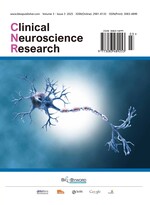A Data Mining-Based Study on the Academic Experience of National Master of Traditional Chinese Medicine Xiong Jibai in Treating Insomnia
Abstract
Objective: To explore Professor Xiong Jibai’s dialectical thinking characteristics and medication rules in the treatment of insomnia, and to investigate his clinical experience and academic thoughts on the treatment of insomnia, providing references for the clinical diagnosis, treatment, and scientific research of insomnia in traditional Chinese medicine. Methods: This study collected 270 cases of insomnia patients diagnosed and treated by Professor Xiong Jibai from January 1, 2020, to December 31, 2024, at the outpatient department of the First Affiliated Hospital of Hunan University of Chinese Medicine. After sorting out standardized terminology, the data were entered into the auxiliary platform for the inheritance of traditional Chinese medicine. Statistical analysis was performed on symptoms, syndromes, drug frequency, four qi (warm, hot, cool, and cold), five flavors (sour, bitter, sweet, spicy, and salty), meridian tropism, and prescriptions. Results: The high-frequency symptoms of insomnia patients were frequent dreaming, difficulty falling asleep, easy waking up after sleeping, upset, difficulty sleeping through the night, fatigue, early waking, dizziness, and irritability. The syndrome classifications mainly included six types: phlegm-heat disturbing the spirit syndrome, heart and gallbladder qi deficiency syndrome, liver fire disturbing the heart syndrome, heart and kidney disharmony syndrome, heart and spleen deficiency syndrome, and yin deficiency with fire hyperactivity syndrome. The high-frequency drugs were fried jujube kernel, dragon’s teeth, Poria cocos, licorice, Coptis chinensis, mother-of-pearl, Pinellia ternata (prepared), dried tangerine peel, bamboo shavings, and immature bitter orange. The four qi of the drugs were mainly cold, neutral, and warm. The five flavors were predominantly sweet, bitter, and pungent, and most of them were attributed to the heart and spleen meridians, followed by the lung, stomach, and liver meridians. Conclusion: Professor Xiong Jibai believes that the disease location of insomnia is mostly in the heart and spleen, and the pathogenesis focuses on phlegm, fire, and deficiency. The treatment mainly focuses on regulating cold and heat, tonifying deficiency, and purging excess. It is advisable to combine with calming and tranquilizing drugs to enhance the curative effect.
References
Lin JC, Lin SJ, Chen Y, et al., 2016, Clinical Effect of Integrated Traditional Chinese and Western Medicine in Treating Sleep Disorder Syndrome. Practical Clinical Journal of Integrated Traditional Chinese and Western Medicine, 16(7): 13–14 + 36.
Liu FY, 2012, Thoughts on the Treatment of Sleep Disorders with Integrated Traditional Chinese and Western Medicine. Chinese Journal of Integrated Traditional and Western Medicine, 32(2): 10–12.
Gao ZG, Yang ZG, 2013, Research Progress on the Integrated Traditional Chinese and Western Medicine Treatment of Sleep Disorders. Journal of Traditional Chinese Medicine Research, 26(7): 81–84.
Guo J, 2013, Experience in Treating Insomnia with Traditional Chinese Medicine. China Practical Medicine, 8(1): 240.
Jia JP, Chen SD, 2013, Neurology. People’s Medical Publishing House, Beijing, 414–415.
Chinese Psychiatric Association, 2001, Chinese Classification and Diagnostic Criteria of Mental Disorders (CCMD-3L), 3rd Edition. Shandong Science and Technology Press, Jinan.
National Administration of Traditional Chinese Medicine, 2012, Diagnostic and Therapeutic Criteria of Traditional Chinese Medicine Diseases and Syndromes. China Press of Traditional Chinese Medicine, Beijing, 31.
Wu MH, Wang XY, 2012, Internal Medicine of Traditional Chinese Medicine. China Press of Traditional Chinese Medicine, Beijing, 152.

